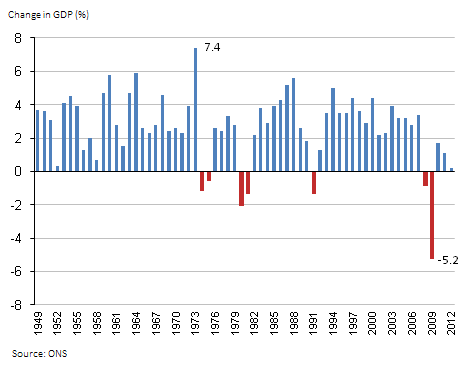A beginner’s guide to growing your business through strategy
Where do you want your business be in five years’ time? The more detail there is in your answer, the better your chances of achieving your goals. Developing and implementing a strategy will not only give you a stronger idea of what you want to achieve, it will also help you develop a roadmap for success. Strategy should drive businesses of all sizes. In this guide, we’ll consider the key elements needed to develop your first business strategy.
What is a strategy?
A business’s strategy is its answers to some core questions that define what a business does and how it does it.
The questions a strategy addresses are:
- What do we want to achieve?
- Who are our customers?
- What do we do for them?
- Why do they choose us?
- How will we cope with our competitors?
- What do we need to achieve this?
A strategy is a way for you to define what you want your business to accomplish and how you can meet your goals. It’s important to bear in mind the distinction between strategy and tactics – a line that sometimes can appear blurred to those who are drawing up a strategic plan for the first time. Strategy is a broad overview of your plans and goals. Tactics are the specific techniques used to achieve these objectives. The distinction will become even clearer when we look at examples.
Analysing your position
Strategy cannot exist in a vacuum – there are factors that affect the success of any business. These include competitors, legislation that may apply to your company and the economic climate. A strategy made without any consideration of these factors is unlikely to succeed.
For the sake of simplicity, we will be using the Swot framework to develop an example strategy. Swot stands for: strengths, weakness, opportunities, threats. In assessing these issues, you should end up with something like this hypothetical analysis for a small company making bespoke furniture.
The owner of this business can now ask herself the questions we looked at earlier and use the Swot table to help formulate answers. The end result would be something like this:
“The company will increase sales from 100 to 500 items of furniture over a period of three years. To achieve this, the company will focus on further improving its links and visibility within the community. To differentiate itself from larger competitors, it will focus on promoting the bespoke nature of its products. It will also need to increase the availability of manpower and production resources.”
From a straightforward piece of analysis, the firm now has a solid strategy that includes a measurable goal and an overview of how to achieve it. The next step is to use it to develop tactics.
Getting tactical
It’s likely you’ll have just one strategy statement (unless you have a larger business) but you will almost certainly have more than one tactical statement. However, it is vital that your tactics match up with your strategy. If we stay with our bespoke furniture example, it’s clear that the inability to produce items at scale could prove to be a major threat to achieving the goal. One way this could of dealing with this is by outsourcing the work overseas. From a cost point of view, this may even be the most attractive option. However, outsourcing in this instance could damage its links with the community, and would also put paid to the firm’s bespoke credentials. That means this particular tactic is incompatible with the overall strategy and should not be used.
A more suitable tactic in this case would be to employ an apprentice and/or another skilled carpenter so the company can increase its output as required. Other tactics the company could use include:
- A marketing campaign in the local press
- Establishing a social media presence with a focus on the local community
- Involvement in local good causes
Clearly, more work is required to flesh out these ideas and then implement them, but they are good examples of tactics that are aligned with a strategy. This is what you must work towards.
If you’re implementing your first strategy at an established business, you may find that existing tactics are incompatible with your new goals. If this is the case, you’ll face the sometimes painful task of putting an end to these tactics. These short-term sacrifices should pay off in the long run.
Adapting your strategy
So far you’d be forgiven given for thinking that your business strategy should be set in stone. Although it’s true changing strategy on a regular basis can harm a company’s prospects, failing to react to changing circumstances can be just as bad. You should review your tactics and strategy at least every six months. You may find that you need to adjust or ditch a certain tactic. For example if the furniture company discovered its ad campaign wasn’t generating the amount of business it expected, it might increase its focus on social media instead.
In more extreme circumstances, you may find that your strategy itself needs to change. In our example a shortage of skilled carpenters nearby may make it impossible to hire enough staff to meet its 500 items a year target. Alternatively, a downturn in the local economy may mean that demand for bespoke furniture drops. The knock on effect being that even if the company could produce 500 items a year, people wouldn’t buy them. Or it may be that things go better than expected and the company is in a position where it can introduce a more ambitious strategy. By reviewing your strategy on a regular basis, you’ll be able to react to changes regardless of whether they’re positive or negative.
By learning how to develop, implement and monitor a business strategy you’re learning how to ensure your business survives the tough times and thrives in the good times.
Further reading
Although you should now be ready to draw up your first business strategy, we’ve only scraped the surface of the topic. If you want to examine other areas, such as how to ensure members of staff are committed to your strategy, then these are the resources for you.
The FT Essential Guide to Developing a Business Strategy has been described as “the most succinct and most practical handbook on business strategy on the market” by Jules Goddard, fellow at the London Business School.
Exploring Strategy is even more in depth and features case studies as well theory and learning tools.
Alternatively, if you prefer to do things in person City University London offers a short course on small business planning.










